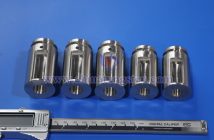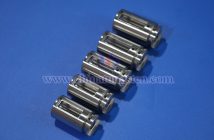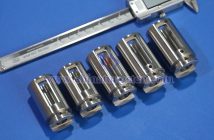In today's era of rapid technological advancement, radiation has become an unavoidable part of our lives. Medical radiography is a common scenario where we encounter radiation; for instance, X-ray examinations clearly reveal the condition of human bones, aiding doctors in diagnosing fractures and lung diseases. Similarly, industrial flaw detection employs techniques like radiographic and ultrasonic testing to detect cracks or pores in components of aerospace equipment and automobiles without damaging the workpiece. However, the radiation sources used in flaw detection, such as X-rays and gamma rays, are highly radioactive. Without proper protection, operators exposed to radiation over long periods may suffer radiation damage. Thus, radiation protection is crucial, and the tungsten alloy shielding can serves as a "sturdy shield" safeguarding us from radiation harm.
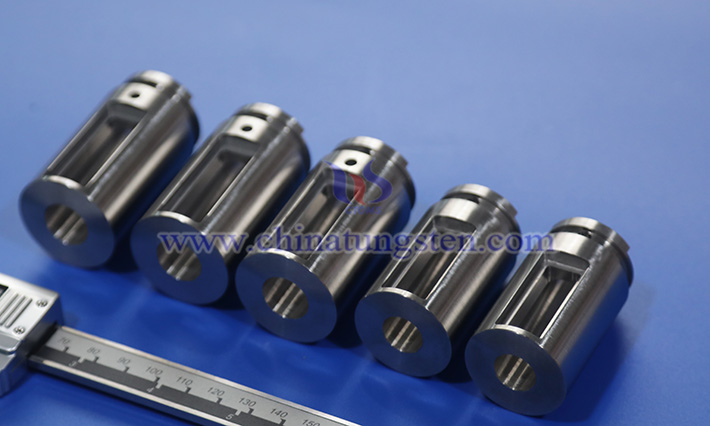
I. Unveiling the Mystery of Tungsten Alloy Shielding Cans
Tungsten Alloy Shielding Can is, in simple terms, a device specifically designed to shield radioactive materials, preventing harm to human health and the environment. Essentially, it leverages the unique properties of tungsten alloy to create a "safe fortress" for radioactive substances. Its primary function is to block various rays emitted by radioactive materials. These rays, with their high energy, can penetrate human tissues, damage cell structures, and pose health risks. Tungsten alloy shielding cans effectively absorb and scatter these rays, significantly reducing radiation intensity and protecting personnel and the environment from radiation damage.
The emergence of tungsten alloy shielding cans is no accident but a result of technological progress and real-world needs. With the widespread use of nuclear energy in the power sector, the number of nuclear power plants has increased, making the transportation and storage of nuclear fuel a critical issue. Nuclear fuel is highly radioactive, and without effective shielding during transport and storage, a leak could have catastrophic consequences. In medical radiotherapy, radioactive drugs and equipment also require proper shielding to ensure the safety of medical staff and patients.
Traditional shielding materials like lead, while offering some protection, have several drawbacks, including relatively low density, environmental pollution, and poor mechanical properties. As demands for radiation protection continue to rise, the development of a more efficient, safer, and environmentally friendly shielding material has become urgent. In this context, the tungsten alloy shielding can was born, emerging as a "new favorite" in radiation shielding due to its superior performance.
II. Exploring the Inner Secrets of Tungsten Alloy Shielding Cans
The pivotal role of tungsten alloy shielding cans in radiation protection owes much to the tungsten alloy material used. High-specific-gravity tungsten alloy, with tungsten as its base (typically containing 85%-99% tungsten) and small amounts of metal binders like nickel, iron, or cobalt, is the key. The most notable feature of this alloy is its high density, ranging from 16.5 to 18.75 g/cm3.
At the atomic level, tungsten atoms have a high relative atomic mass—tungsten, with an atomic number of 74 and a relative atomic mass of 183.84, possesses a strong nuclear charge, enhancing its ability to block rays. When rays interact with atoms in the tungsten alloy, their energy is absorbed or scattered, reducing their intensity. Moreover, tungsten alloy exhibits excellent mechanical properties: high strength to withstand external forces without deforming, and great hardness for good wear resistance, ensuring the shielding can maintains structural integrity over long-term use without being compromised by external factors.
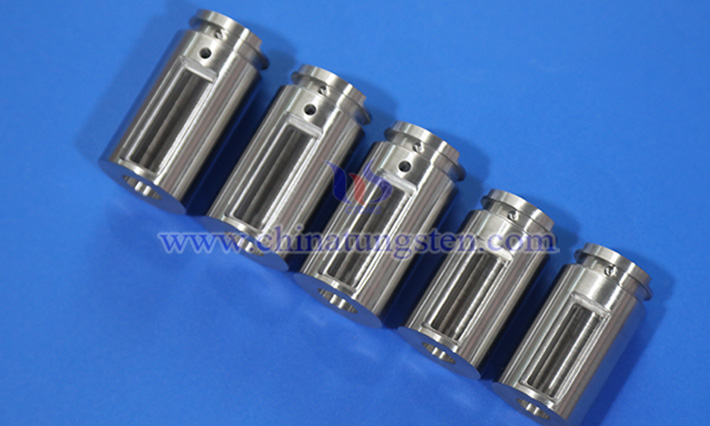
In terms of environmental impact, tungsten alloy shielding cans have a clear advantage over traditional lead materials. Lead, a heavy metal, can harm the environment and human health during production, use, and disposal. Prolonged lead exposure can damage the nervous and blood systems, and its persistence in soil and water sources causes long-term pollution. In contrast, tungsten alloy is non-toxic and non-radioactive, posing no risk to humans or the environment. Even if the shielding can wears out over time, it releases no harmful substances, avoiding environmental pollution. After reaching the end of its service life, it can be recycled, reducing resource waste and aligning with sustainable development principles.
In practical applications, shielding cans require exceptional durability to maintain effective protection over time. Tungsten alloy shielding cans meet this need with excellent corrosion resistance and high strength. In harsh environments like the humid conditions of nuclear power plants or the chemical corrosion of industrial flaw detection workshops, they resist various chemical attacks, remaining rust-free and undamaged.
Additionally, tungsten alloy's good processability allows it to be machined into various complex shapes and sizes based on specific needs and scenarios. In the medical field, to accommodate different radiotherapy equipment, tungsten alloy shielding cans can be crafted into special shapes—circular, square, or irregular—to optimize shielding effectiveness.
III. Application Fields of Tungsten Alloy Shielding Cans
With its outstanding performance, tungsten alloy shielding cans are widely used across multiple fields, providing robust protection against radiation. In the medical sector, they are ubiquitous. During radiotherapy, they serve as storage containers for radioactive drugs, ensuring medical staff are protected from radiation exposure during operations.
In the nuclear power industry, tungsten alloy shielding cans play a critical role from nuclear fuel transportation to power plant operations, and in nuclear waste management. During nuclear fuel transport, they ensure the safety of radioactive materials en route, preventing radiation leaks. In nuclear waste processing, they are used to store and transport highly radioactive waste, minimizing radiation hazards.

